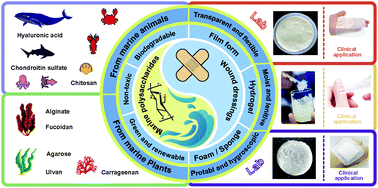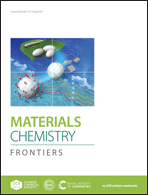Marine polysaccharides: green and recyclable resources as wound dressings
Abstract
As a green and renewable resource, marine polysaccharides have inherent nontoxicity, good biocompatibility, biodegradability, and environmental friendliness. Compared to land-based polysaccharides, marine polysaccharides acquire an absolute advantage in the process of diversity, extraction and purification. In recent years, some marine polysaccharides (such as alginate and chitosan) have been successfully converted into commercial products and widely used in clinical wound repair. Marine polysaccharide-based dressings can be prepared into multiple types of products (hydrogels, films, foam, or sponge) according to different application scenarios, providing excellent conditions for wound healing. These types of dressings can block bacteria, maintain the wound microenvironment, and promote wound healing. The development and utilization of marine polysaccharides are also expected to solve ecological problems such as green algae tide and marine biological invasions. This review presents the advances in marine polysaccharide-based wound dressings in the past three years. The direction of improvements in wound dressings based on marine polysaccharides in the future is also prospected.

- This article is part of the themed collection: 2021 Materials Chemistry Frontiers Review-type Articles


 Please wait while we load your content...
Please wait while we load your content...